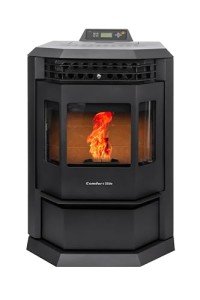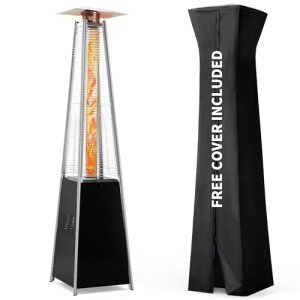KrauseDario
KrauseDario发表的博客
The Comprehensive Guide to Fireplaces and Stoves
Fireplaces and stoves have actually been important to human civilization for centuries, acting as a source of heat, light, and comfort. These home appliances are available in numerous types and have developed over the years, catering to varied preferences and technological developments. This article offers an informative introduction of fireplaces and stoves, highlighting their types, advantages, upkeep suggestions, and installation considerations.
Kinds of Fireplaces
The world of fireplaces is abundant and varied. Here are the most typical types:
Wood-Burning Fireplaces:
- Traditional and lovely.
- Requires skilled wood and regular maintenance.
- Produces an enjoyable scent and crackling sound.
Gas Fireplaces:
- Offer convenience and ease of usage.
- Available in vented and vent-free alternatives.
- More efficient and cleaner than wood-burning choices.
Electric Fireplaces:
- Provide atmosphere without the requirement for a chimney.
- User-friendly with push-button control options.
- Can be used as an additional heat source.
Pellet Stoves:
- Use compressed wood pellets as fuel.
- Highly efficient and eco-friendly.
- Often geared up with thermostats for temperature level control.
Ethanol Fireplaces:
- Utilize bioethanol fuel, making them portable.
- Do not require venting, which enables flexible placement.
- Produce a realistic flame with minimal smoke.
Outdoor Fireplaces:
- Designed for outdoor settings; can be wood or gas-burning.
- Great for amusing and enhancing yard aesthetics.
- Frequently constructed from stone, brick, or metal.
Benefits of Fireplaces and Stoves
Incorporating a fireplace or stove into a home uses various benefits:
- Aesthetic Appeal: Fireplaces function as striking centerpieces in any space, including warmth and character to home decor.
- Increased Property Value: Homes with practical fireplaces tend to have greater resale values.
- Energy Efficiency: Modern fireplaces and stoves are developed to be more energy-efficient, which can lead to decreased heating expenses.
- Backup Heating Source: In case of power failures, wood-burning and gas fireplaces can act as essential heating sources.
- Versatile Heating Solutions: Different kinds of fireplaces deal with different heating requirements and lifestyles, from comfortable ambiance to efficient heating.
| Type of Fireplace/Stove | Fuel Source | Efficiency Rating | Maintenance Level |
|---|---|---|---|
| Wood-Burning | Wood | Moderate | High |
| Gas | Natural gas/LP | High | Low |
| Electric | Electrical energy | High | Really Low |
| Pellet | Wood pellets | High | Moderate |
| Ethanol | Bioethanol | Moderate | Low |
| Outdoor | Wood or gas | Moderate | Varies |
Upkeep Tips
Correct maintenance extends the life of fireplaces and stoves, guaranteeing security and efficiency. Here are some important ideas:
Regular Cleaning:
- Wood-burning fireplaces should be cleaned after a complete season of usage to eliminate soot and creosote.
- Gas fireplaces require routine evaluation of the burner and vents.
Regular Inspections:
- Have chimney sweeper carry out yearly inspections to identify clogs or structural damage.
- Inspect the seals and gaskets on gas units to avoid leakages.
Fire Safety:
- Install smoke and carbon monoxide gas detectors in homes with fireplaces or stoves.
- Keep a fire extinguisher near the fireplace or range for emergency situations.
Use Quality Fuel:
- For wood-burning units, always utilize seasoned wood; prevent dealt with or painted wood.
- When using pellets, ensure they are stored effectively to avoid moisture absorption.
Handle Airflow:
- Keep vents and ducts clear to promote effective ventilation and air flow.
- Consider utilizing glass doors or screens to minimize particles and ash in the living area.
Setup Considerations
Installing a fireplace or range requires cautious consideration of numerous aspects:
Location:

- Choose an area that enables appropriate clearance and ventilation.
- Think about the design of your home and the benefit of natural heat circulation.
Building Regulations and Permits:
- Check local policies regarding setups and essential licenses.
- Engage an expert to make sure compliance with security standards.
Fuel Type:
- Evaluate your fuel choices based on schedule, expense, and environmental impact.
- If choosing for gas, ensure existing gas lines can accommodate the new home appliance.
Ventilation:
- Proper venting is essential for security and efficiency, especially for gas and wood-burning units.
- Speak with an expert to figure out the best venting solution.
Visual Consideration:
- Select a design that matches your home's interior.
- Think about mantels, surround materials, and colors that match your decoration.
Frequently asked questions
What is the very best type of fireplace for heating?
Gas fireplaces are normally more efficient for heating, while wood-burning fireplaces supply more ambient heat.
How typically should I clean my fireplace?
Wood-burning fireplaces need to be cleaned at least once a year, while gas fireplaces need less frequent attention depending upon usage.
Can I set up a fireplace myself?
While some homeowners may attempt DIY setup, it is advised to employ an expert to ensure security and compliance with building regulations.
Are electric fireplaces efficient?
Yes, electric fireplaces are really efficient and can work as efficient additional heating sources, especially in smaller sized spaces.
What is the lifespan of a fireplace?
The life expectancy of a fireplace differs depending upon the material, type, and upkeep; nevertheless, a well-kept wood-burning fireplace can last over 30 years.
Fireplaces and stoves remain classic features in homes, offering warmth and ambiance. Comprehending the different types, benefits, and maintenance requirements can help house owners make informed choices about setup and care. With careful preparation and routine upkeep, these appliances can boost both the convenience and value of a home for many years to come.

